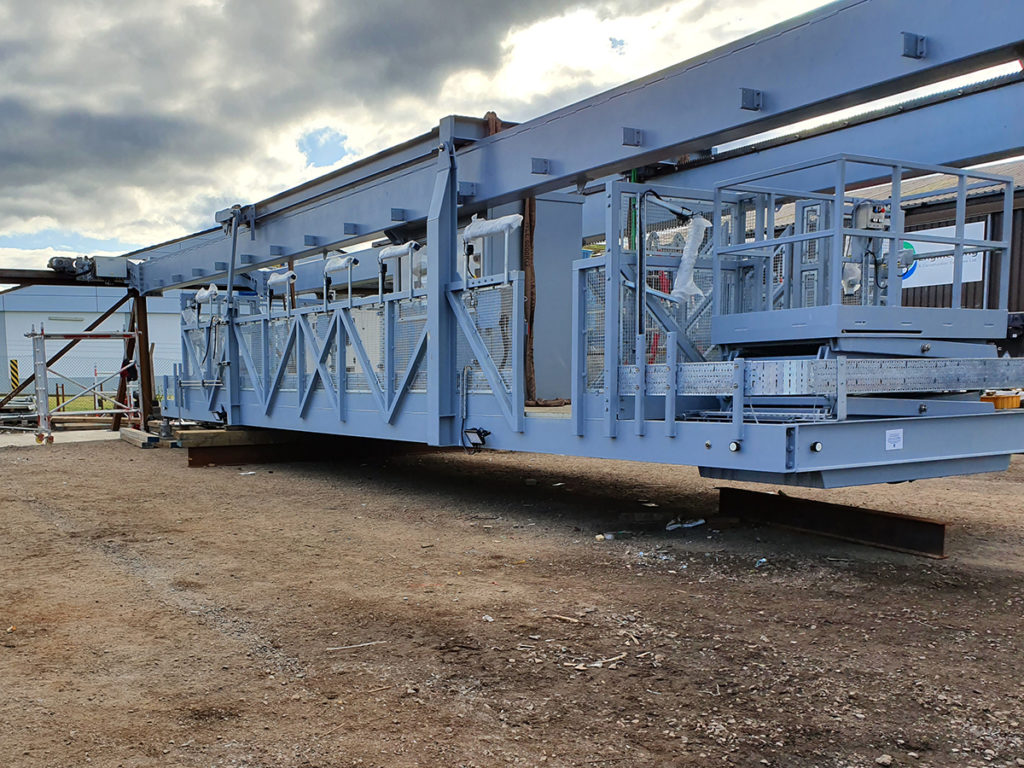
ENGINEERING specialist Spencer Group is currently embarking on a challenging four-year programme of works on the Erskine Bridge.
The multi-million pound deal includes providing temporary access platforms, inspecting and repairing steelwork, and painting some 60,000 square metres of the structure.
At 1.3km, the bridge, which spans the River Clyde and connects West Dunbartonshire with Renfrewshire, is the longest cable-stayed bridge of its type anywhere in the world. The bridge opened in 1971 and is used every day by tens of thousands of motorists, as well as cyclists and pedestrians.
Spencer Group has been tasked by Transport Scotland with delivering the vital works, with Scotland TranServ taking on the role of principal designer and engineer of the works. Long span bridge specialist COWI were appointed by Scotland TranServ to undertake the design.
Luke Fisher, project manager at Spencer Group, told Project Scotland that access is one of the biggest challenges. “There are permanent gantries under the bridge at the moment but they’re not suitable for the type of invasive works that we’re carrying out,” he explained.
“Therefore, we’re providing special purpose fully encapsulated temporary access gantries, that work their way along the full length of the bridge, providing operatives access to shot blast, inspect, repair and paint the full underside of the deck
“In addition, there’s currently no means of accessing the majority of the central portion of the underside of the bridge deck, therefore these elements can only be accessed to inspect, in detail, with our temporary access platforms that we’re providing.”
Luke added that other challenges include the presence of a live railway line, live water supply pipes and a redundant gas main to remove under the footpaths, as well as a desire to minimise disruption to the general public at all stages of the project
“As part of our strategy with all our temporary works, we’re trying to avoid carriageway or lane closures as much as practically possible, which involves providing innovative design solutions, such that we keep disruption to the public to an absolute minimum.”
In total, Spencer teams will apply 46,000 litres of paint across the structure’s steelwork, from the bridge deck below to the towers above. During abrasive blasting processes and spray painting, sections of the bridge will be wrapped in a high-strength ‘encapsulation tent’ that will capture any residue.
The Erskine contract was won shortly after Spencer Group completed a £10 million project to carry out repairs on the Forth Road Bridge for Transport Scotland and their operating company Amey. That involved the replacement of truss end links, which connect the bridge deck to the towers, using a new sliding bearing system designed by Transport Scotland’s consultants Fairhurst.
Spencer is also currently undertaking a project for Transport Scotland and their operating company BEAR Scotland at the Kessock Bridge across the Beauly Firth.
Luke explained, “We’re providing a new replacement under deck inspection gantry. This is a permanent gantry which replaces and improves upon the design of the existing under deck gantry, which has been there since its construction in the early 80s and has come to the end of its structural design life.”

The purpose of the gantry is to provide bridge operators with access to the underside of the bridge for inspection purposes. The gantry has been built and is currently being tested in a factory environment ahead of delivery and installation on-site by the end of the year.
Luke described the Scottish market as “extremely important” for Spencer Group, highlighting the number of major bridge structures that were built in the 1970s and 80s, which are now entering into a phase of vital maintenance to ensure they remain operational.
He cited “innovative design” as the key to the business winning so many projects north of the border.
“Each project offers significant challenges,” he added. “Every challenge is unique. In nearly every instance, it’s works that haven’t been done before. A lot of thought and planning goes on in the early stages at the tender process. We have to come up with something new and innovative that hasn’t been done before that’s better than our competitors in order to secure the project.”











